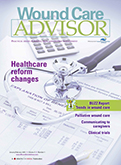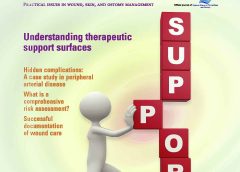This approach brings patient-centered care to life.
By Gail Rogers Hebert, MS, RN, CWCN, WCC, DWC, OMS, LNHA
Editor’s note: This article is the second in a two-part series on palliative wound care. For the first part, click here.
By preventing and relieving suffering, palliative care improves the quality of life for patients facing problems associated with life-threatening illness. This care approach emphasizes early identification, impeccable assessment, and treatment of pain and other issues—physical, psychosocial, and spiritual. (more…)
Read More

